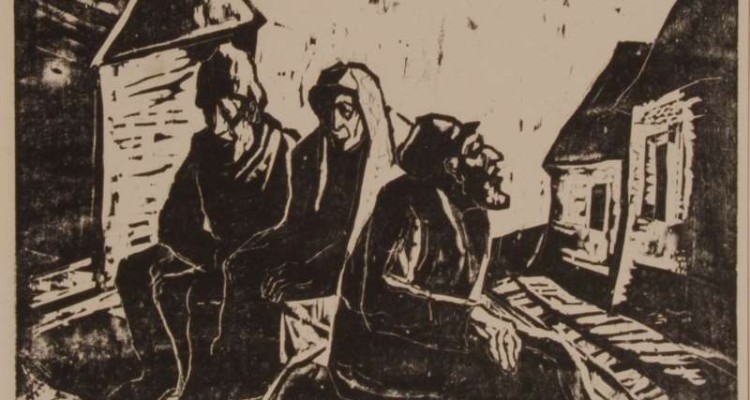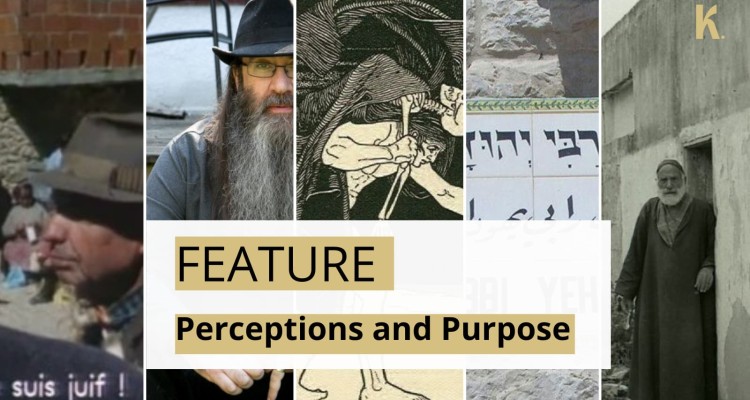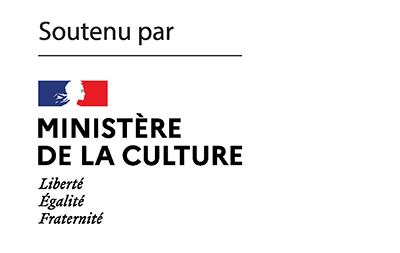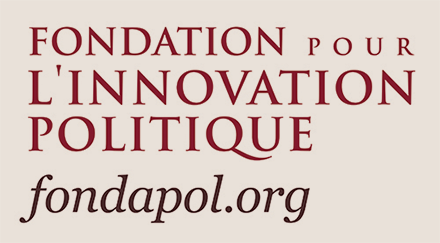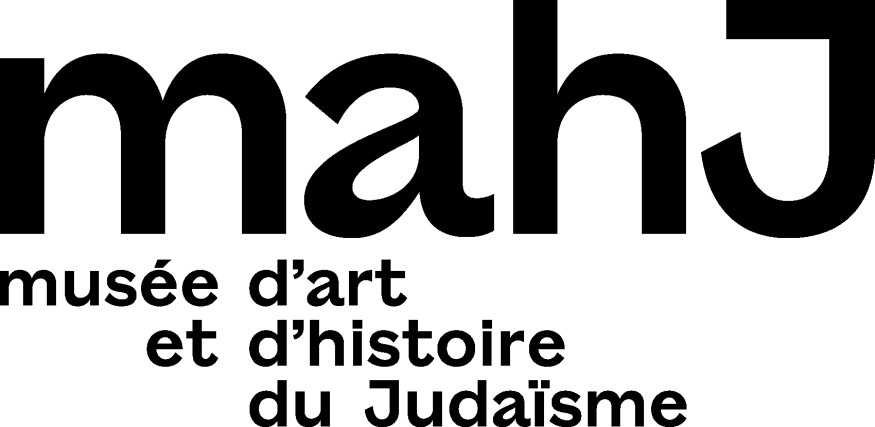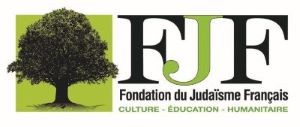Last February, Gabriel Abensour lamented in our columns the disarray of Franco-Judaism, deploring its lukewarmness and the forgetfulness of its spiritual heritage. After David Haziza, it is now Julien Darmon’s turn to offer a friendly retort. Rather than looking to the German model of the 19th century, or envying the spread of Anglo-Saxon Jewish thinkers, wouldn’t it be better to appreciate and encourage the intellectual creativity of the French Jewish world, in all its specificity?

Last February, Gabriel Abensour offered us his view of the current state of French Judaism and the deep-rooted ignorance of its dual heritage, both French and Sephardic. The many reactions to his text, including David Isaac Haziza’s response in these very pages, as well as the many comments and shares online, show at the very least that a significant proportion of contemporary French Jews are not indifferent to this question – which is, in itself, the beginning of a refutation of this “disarray”. The K team has given me the honor of being invited to respond. As an actor engaged in a forward-looking reflection on the future of French and European Judaism, and a modest linchpin of the Jewish History of France (Histoire juive de la France ) directed by Sylvie Anne Goldberg and published by Éditions Albin Michel in October 2023, I could not but respond positively to this invitation.
A widely shared observation
Gabriel Abensour’s text is worth analyzing in its entirety. It is divided into two parts: an observation and an explanation. The observation is as follows: French Judaism is part of the continuity of two heritages, that of Franco-Judaism represented by “Joseph Salvador, Salomon Munk, Lazare Wogue and Zadoc Kahn” and, a century apart, “André Neher, Léon Ashkénazi and Emmanuel Levinas”, and on the other hand, that of Sephardic or North African culture, whose paragon for him is Rabbi Yossef Messas ; but, he writes, “you only have to look at the younger generations to see that something has broken in the chain of transmission. Neither Franco-Judaism nor Sephardic Judaism is being passed on in France, let alone the blessed fruit of their union.
What nourishes contemporary French Judaism is mainly a Judaism imported from elsewhere, both geographically with Israel and culturally with Eastern European ultra-Orthodoxy. The external contribution itself is not necessarily problematic. The different Jewish communities have always communicated, exchanged and enriched each other. However, the prerequisite for the successful integration of this external contribution is a pre-existing, firmly rooted identity. This is where contemporary French Judaism seems to be failing. Amnesiac about its own French and Sephardic heritage, it now holds only fragments of memory, to which are added borrowings grafted on more or less abruptly”.
Many of us share this observation. Where I would take the liberty of disagreeing with Gabriel Abensour is in his analysis of the causes of this state of affairs.
The first, according to him, is the “lukewarmness” and “lack of audacity” of nineteenth-century Consistorial Judaism, whose conciliatory hegemonism stifled any debate on ideas, in contrast to the German model, where the emergence of Reform, Conservative and neo-orthodox Judaism stimulated debate on ideas, producing works that continue to irrigate contemporary Jewish life. The second is to be found in a colonial repression of Sephardic heritage in favor of “total submission to Ashkenazi ultra-Orthodoxy”. These two aspects are largely independent and deserve to be treated separately.
Is Franco-Judaism too soft?
On the first point: the apathy of a consistorial Franco-Judaism compared with the vigorous pluralism of the German-speaking world. This analysis is highly open to criticism. First of all, how can this accusation be reconciled with the aforementioned figures of “Joseph Salvador, Salomon Munk, Lazare Wogue and Zadoc Kahn”, to whom many other names could be added, such as Samuel Cahen and Godchaux Weil, or even, by widening the focus a little, James and Arsène Darmesteter or the Reinach brothers? The big difference between France and Germany in the 19th century was that French Jews were fully emancipated and able to exercise their talents in public institutions, while German Jews were still kept on the fringe of academia. In fact, during this period, there was compenetration between scholarly and rabbinical circles in France, whereas these remained quite distinct in Germany – and, a fortiori, in Eastern Europe. So, yes, France, at that time, undoubtedly “produces” fewer great rabbinic figures; it doesn’t have its Rav Shimshon Raphael Hirsch. But it has no reason to be ashamed of its great scholars, who are also very active in helping oppressed Jews around the world, whether through the Alliance Israélite Universelle network of schools or through diplomatic channels, notably on the occasion of the Mortara affair or the Damascus affair. Incidentally, I find it hard to understand how Gabriel Abensour can glorify the splintering of German Judaism into Reform, Orthodox and other denominations, which he compares favorably with the culture of “permanent compromise” he attributes to Consistorial Judaism, while he has been deploring for years the sectarianism of the Ashkenazi Haredi world and preferring to it the alleged “flexibility” of the Sephardic rabbinate. But let’s move on.
The major difference between France and Germany in the 19th century was that French Jews were fully emancipated and able to exercise their talents in public institutions, whereas German Jews were still kept on the fringe of academia.
In fact, France at the end of the 19th century was not impervious to developments on the other side of the Rhine. What’s more, the integration of Alsace and Moselle into the Reich between 1870 and 1918 made these regions a passageway for neo-orthodoxy and, beyond that, initiated wider communication with Judaism in Central and Eastern Europe. A good example of this is Ernest Weill (1865-1847). An Alsatian with a German upbringing, he studied at Berlin’s Hildesheimer Seminar, where Rav Shimshon Raphael Hirsch’s Torah Im Derech Eretz was a revelation that guided him throughout his life. At the University of Strasburg, he defended a thesis on Maimonides’ Arabic commentary on the Mishna tractate Berachot , under the supervision of Theodor Nöldeke, a leading Koran scholar. Appointed Chief Rabbi of Colmar by the Consistoire after the First World War, he set about establishing a yeshiva in France in 1932, asking the greatest talmudist of his time, the Lithuanian Rabbi Elhanan Wasserman, to send him a yeshiva director. The latter sent his son Simcha Wasserman, who was soon succeeded by Rav Chaim Yitzchak Chajkin, a pupil of the Chofetz Chaim. Faced with the threat of Nazi invasion, the yeshiva moved to Aix-les-Bains, and after the war became one of the nodal points in the reconstruction of European Judaism. Isn’t such a path exemplary of a Franco-Judaism to which neither the yeshiva nor the university are strangers?
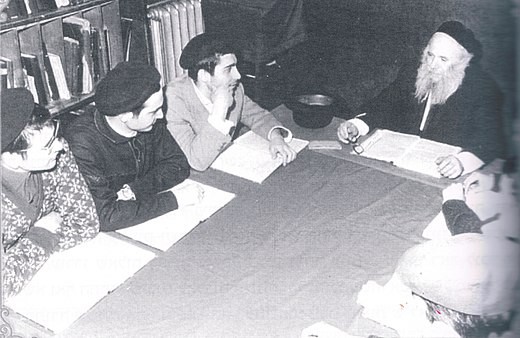
Don’t mix eras
One of the major problems with Gabriel Abensour’s analysis is that it indiscriminately mixes very different eras. What I’ve said about the dynamism of the consistorial model wanes, admittedly, in the first decades of the 20th century. However, this was not due to a lack of pluralism, since the 1905 law allowed for the creation of non-Consistorial communities, particularly Reformed ones. However, this model has had its day, and other forms of Jewish religiosity and thought were emerging, with André Spire, Edmond Fleg and Robert Gamzon as prominent figures. Here too, their intellectual audacity, however dated it may seem today, had little or nothing to envy of that of a Buber or a Rosenzweig (whom it would be highly improper to portray as heirs to the Hirschian model on the sole grounds that they, like him, were German), and was naturally expressed in their associative activism (the Eclaireurs Israélites de France, to name but one).
These committed Jewish intellectuals, in the name of both the Jewish spirit and French values, played an essential role in both armed and spiritual resistance under the Occupation and Vichy. The masters of the next, post-war generation – Gordin, Levinas, Manitou, Amado Levi-Valensi, Neher, Chouraqui, etc. – are their direct heirs. From the 1940s to the 1970s, the rabbinate was not to be outdone, creating publishing collections such as “Les Chantiers du Rabbinat” and “Présences du judaïsme” to translate Rashi’s commentary and the Mishna into French, as well as the works of Levinas and all currents of Jewish thought, not forgetting Elie Munk’s “La Voix de la Torah” (“The Voice of the Torah”). It would undoubtedly be tedious to continue to unroll the thread of these generations of French Jewish thinkers right up to Benny Levy, Charles Mopsik and many others whose direct pupils we are.
Doesn’t the cultural hegemony of the same American and Israeli Judaisms explain the obscurity into which the French-Jewish tradition has been cast, far more than any alleged intrinsic defects of the latter?
I think I’ve sufficiently demonstrated that the French Jewish world has always been intellectually creative. Admittedly, this creativity has perhaps been less often expressed within a strictly rabbinical framework than its German counterpart; but is this a reason to disqualify it? In fact, I would venture to say that Gabriel Abensour suffers from a bias with which he is familiar: that of measuring the quality and authenticity of Jewish culture by rabbinical, Orthodox or even Ashkenormative criteria. Certainly, Rav Shimshon Raphael Hirsch’s commentary had the good fortune to be translated from German into Hebrew and integrated into the Orthodox canon; more generally, German Jewish intellectual heritage has shone more brightly in the United States and Israel than the works of Franco-Judaism. But isn’t this largely because German Jews fleeing Nazism seeded American and Israeli Judaism, while French Jewish intellectuals largely remained in France? And doesn’t the cultural hegemony of the same American and Israeli Judaisms explain the obscurity into which the French-Jewish tradition has been cast, far more than any alleged intrinsic defects of the latter? In the final analysis, isn’t presenting the Consistorial model, and then that of the integration of Jews into French intellectual life, as “assimilation”, as “compromise”, an uncritical adoption of the portrait always painted by an ultra-Orthodoxy with an equally hegemonic vocation?
Longing for the smell of the orange trees
Let’s move on to the second point, that of the occultation of Sephardic heritage, presented as a victim of colonialist treatment on the part of Ashkenazi ultra-Orthodoxy. Here, too, we need to be very careful. From the outset, it makes little sense to speak of a Sephardic Judaism stretching from 1492 to 1962 and from Morocco to Salonika (to cite only the places explicitly mentioned by Gabriel Abensour). In contrast to a long-term approach that erases efficient causes, I would insist on a close reading of both time and space. Between the 1830s and 1960, i.e. the period of colonization, Morocco, Algeria and Tunisia experienced very different political and community situations. Morocco maintained strong rabbinical structures and distinct religious traditions for a very long time; moreover, before the Second World War, it saw the establishment of “yeshivot”, in reality religious high schools, where the influence of Eastern European Orthodoxy was very strong and determined the post-war trajectory of many of its representatives. Judaism in Algeria was in a deplorable state before the French conquest, and many of its rabbis welcomed the French with enthusiasm: for them, it was the advent of the rule of law, putting an end to the Dey’s arbitrary rule. It then underwent more or less the same sociological and intellectual evolution as Judaism in metropolitan France. Tunisia, meanwhile, was much more closely linked to the rabbinical masters of Erets Israel, and sociologically it was a much smaller and more modest community. These internal differences would largely shape divergent trajectories.
If we want to paint a very broad picture of the North African Jewish sociology of those who chose France in the 1960s, we could identify three types. A “Moroccan” type, which preserves a strong identity while unreservedly adhering to the Israeli Orthodox model that was emerging at the time, and to which I’ll return later; an “Algerian” type, for whom Jewishness is, after all, no more than a particular variety of Frenchness; and a “Tunisian” type, for whom the break with the tradition of origin is perhaps the strongest, and who would in greater proportion adhere to a globalized Jewish identity, under the guise of the Lubavitch movement. There’s nothing rigid about this typology, of course, and both the yeshivot Aix-les-Bains and Gateshead will see many Algerian or Tunisian Bahurim, just as Moroccans will be found among the Lubavitch; but I feel it is not too off-base.
Up until the end of the 1960s, it could be said that the Israeli Haredi world was ultimately marginal: it existed, but was not perceived by the wider “religious” Jewish world as an absolute and an ideal.
The standardization of Sephardic Judaism on the Ashkenazi Orthodox model, in France as everywhere else in the world (which is enough to defeat this idea of a specific failure of the French model), occurs in a second phase, becoming massive especially from the 1980s or even 1990s, and is due to a major omission from Gabriel Abensour’s text: the State of Israel. Up until the end of the 1960s, it could be said that the Israeli Haredi world was ultimately marginal: it existed, but was not perceived by the wider “religious” Jewish world as the only absolute ideal, and certainly not as something that could be widely emulated. From the 1970s onwards, a series of changes began to take place that would place it at the center of the Jewish world: the 1967 victory, which gave the State of Israel a messianic, and therefore religious, dimension; Begin’s political choices, which favored the massification of Haredi society, notably by exempting all Bahurei yeshiva from military service; the concomitant massification of yeshivot, which correlates with the massification of higher education everywhere in the developed world; the growing ease, with the democratization of air travel, of traveling to Israel and studying there; the “return of religion” following the failure of the great political ideologies; and no doubt others.
All these factors explain how, at the end of the twentieth century, a French Judaism was structured on the model of an Israeli Haredi Orthodoxy, which, incidentally, is largely fantasized. I’m the first to regret that, unlike British and American Judaism, it was unable to invent a sui generis “French-style” orthodoxy, even though it had a rich intellectual tradition to do so, as we’ve seen. It is regrettable that the consistory authorities chose to accompany this movement rather than shape it. But in any case, the solution would not have been to appeal to the spirits of a “flexible” and “tolerant” Maghrebi Judaism, dating back more than half a century and that had disappeared, like the rest of yesterday’s world, in the turmoil of war, decolonization, globalization and ultra-modernity. To put it another way, in the years 1990-2000, we had to show ourselves capable, not of reviving a past, but of inventing a future. Indeed, in the last twenty years, the French-born generation has been busy reappropriating the best that the various Moroccan, Algerian and Tunisian traditions have to offer, for example in the meticulous study of Hebrew grammar and poetry.
Should Franco-Judaism be resurrected?
Having said this, I’d like to return to Gabriel Abensour’s initial observation, which I’d like to highlight in two respects: the lack of international recognition of French Judaism and its works, and the lack of awareness among French Jews of this rich intellectual heritage.
On the first point, it’s worth qualifying. If we widen the focus beyond strictly rabbinic literature (although Elie Munk has long been translated into English), it seems to me that Levinas and Derrida, to name but a few, are not unknown to the international public, and that Manitou’s work is beginning to be recognized in Israel. Could we go further? Undoubtedly, but it’s all a question of cultural power relations: whether Jewish works are involved or not, it’s much harder to “sell” French authors abroad than American or English authors… How else can we explain the fact that neither Benny Levy nor Charles Mopsik are translated into English or Hebrew?
On the second point, what can we say? That the new generations are ignorant? But isn’t that true of the new generations as a whole, Jewish or not? Aren’t they all equally suffering the effects of a general deculturation, willed by the political powers, who see school as nothing more than the antechamber to the corporate world? How can we pass on the richness of France’s cultural heritage to pupils who, at the same time, are told that their studies are all about getting a job that pays as much as possible – with, in the case of Jewish schools, a veneer of religious practice whose function is above all identity-building?
On the contrary, in the various presentations I’ve given of Jewish History of France to school principals and teachers, they all deplore the consumerist attitude of parents and, consequently, of their children, and they all dream of resurrecting a certain Franco-Judaism steeped in intelligent religiosity, broad cultural horizons and civic commitment. However, the heritage of the past two centuries, whether in France or in the Maghreb, is not essential: it is by looking to the future, by actively defining what future and what values we want to pass on, that we will in turn become the architects of this bold Jewish life that everyone is calling for.

I would also tend to think that Gabriel Abensour’s perspective is distorted by his geographical point of view. When he speaks of this “torah-boxed[1]” French Judaism (dare we use this accusatory neologism), who exactly is he talking about? Where does he encounter it? The fact is that this Judaism focused on halachic minutiae, on the search for the “little critter” (literally), claiming a culture reduced to the basics, often lapsing into superstition, is above all present on social networks and in French-speaking Haredi circles in Israel. It’s essentially a way of defining identity. Yet it’s far from exclusive, whatever the socio-geographical space we’re considering. In Israel, even in the religious world, there are other models, notably on the Zionist-religious side (which also has its shortcomings, but we are not here to hand out good and bad points). In France, a country I know better simply because I live there and am familiar with its various microcosms, this Torah-Box model is much less dominant than the magnifying glass effect of cyberspace might suggest. First of all, there is a very large Jewish world which, while practicing to varying degrees, lives outside this ideological mold: this is true not only of the most progressive individuals, but also of a very large section of the “limud world” which criticizes its simplism. This in no way prevents some people from taking advantage of the services offered by Torah-Box – Shabbat hourtables, Chametz sale forms, etc. – but this is far from translating into strong support. French Judaism, and Parisian Judaism in particular, is highly individualized, and each person “shops” for his or her own practices, values and backgrounds, navigating easily – and often anonymously – from one to another. Incidentally, Torah-Box offers a much wider range of content than the caricature to which the site is often reduced, including high-quality teachings. At the other end of the spectrum, Akadem is a strong presence on the Web. It would be interesting to be able to compare the visitor and engagement figures for the two sites; until we have such data, we can at least argue that Akadem’s success belies this monolithic, deculturated vision of French Judaism. Moreover, it would be wrong to speak of a monolithic French Judaism. The socio-economic realities, the relationship to learning, to general culture and to local traditions are markedly different depending on whether you live in Paris, Créteil, Marseille, Strasbourg, Bordeaux, Montpellier, Metz or Thionville. The needs are not the same, nor are the dynamics.
Above all, there is a large population of observant Jews, as attached to respect for Halacha and the importance of Torah study as they are to the values of modernity, universalism, literature, philosophy and the fine arts.
It is true that, insofar as Israel’s ideology of Haredism is perceived as dominant, people who live in Orthodox circles are not necessarily going to make their fundamental disagreements with the worldview it proposes public, whether on the superstitious aspect of Segulot, the unequal vision of women, the exaltation of the Avrech who has never worked, or the rejection of universal culture. Privately, however, I can testify that the majority of us, including the most bearded among us, have a strong critical distance with this model and its various translations in the French community. I’m not deluding myself either: I’m well aware that I too evolve in social circles which, although diverse, are nonetheless determined by my affinities and semi-public positions; I’m bound to come into contact more often with people who think more or less like me than with those who radically disagree with my opinions; those who come to see me after a conference are the former, not the latter. But I can at least say that the dividing lines don’t necessarily go where you think. Above all, there is a large population of observant Jews who are just as attached to respect for Halacha and the importance of Torah study as they are to the values of modernity, universalism, literature, philosophy and the fine arts. They are by nature less visible, because they don’t experience this modality of Judaism as a passion for identity, and it’s true that they can sometimes feel a little lonely in certain synagogues; yet they are present everywhere, whether self-employed, as executives in private companies or public administration, in national education or Jewish schools, and even in yeshivot. All they lack, perhaps, is what in other times would have been called a “class conscience”. Hopefully, this debate will help to bring it about.
Julien Darmon
Julien Darmon is the Director of the Religious Studies department at Editions Albin Michel; he was notably responsible for the editorial coordination of the encyclopedia Histoire juive de la France (Jewish History of France), directed by Sylvie Anne Goldberg. He holds a doctorate in sociology of religion from EHESS, and is also an expert with the UN Alliance of Civilizations on issues of interreligious dialogue and the fight against antisemitism. He has been teaching Talmud and Midrash for some twenty years, notably at the Paris Yéshiva des étudiants.
Notes
| 1 | Torah-Box is a hugely successful website and content platform ; its contents focus on Halachic and Hashkafic subjects aligned with a popular – some would say: watered down – conception of chareidi Judaism, with a particular focus on belief in the supernatural powers and knowledge of contemporary rabbinical figures, and encouragement of the preservation of traditional gender roles |
